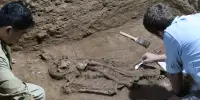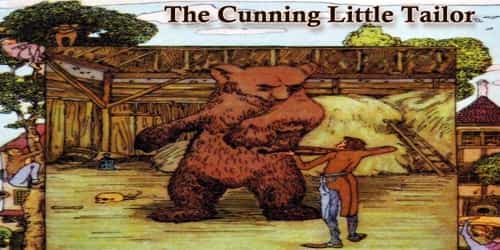New evidence has bolstered an old myth about the arrival of domesticated horses in North America. The discovery was made partially by accident by researchers from the Florida Museum of Natural History. Nicolas Delsol, the lead researcher, was originally studying how cattle were domesticated on the continent, but a case of mistaken identity regarding a cow’s tooth led Delsol to lend credence to a widely held theory about the origins of feral horse herds along the Atlantic coast.
According to a study published in the open-access journal PLOS ONE by Nicolas Delsol of the University of Florida, U.S.A., and colleagues, a newly identified 16th century horse specimen is among the oldest domestic horses from the Americas known to date, and its DNA helps clarify the history of horses in the Western Hemisphere.
The specimen that piqued Delsol’s interest was a fragment of an adult molar, but it was not from a bovine, as Delsol had assumed. The tooth had actually come from a horse. Delsol was intrigued by this discovery because finding horse remnants is unusual in the region due to Spanish colonists’ preference for cows over horses.
Our study highlights how ancient DNA can help us understand cultural and historical processes, not only in the remote past but also in understudied episodes of more recent history. The analysis of the introduction of European domesticates (e.g. the horse) in the Americas is such a fascinating yet understudied topic.
Nicolas Delsol
Domestic horses were introduced to the Americas by Europeans in the late 15th century and quickly became an important part of European industry and warfare in the Western Hemisphere. Historical documents suggest that the first domestic horses were brought to the Caribbean from the Iberian Peninsula, but there is little archaeological evidence to back this up. Researchers present a genetic analysis of a late 16th century horse specimen in this study, which sheds light on the origins and spread of American domestic horses.
The specimen is a tooth fragment, originally misidentified as cow, from the Spanish colonial site of Puerto Real in what is now Haiti. The authors sequenced the mitochondrial genome, not only allowing for a correct identification, but also making this the earliest known complete mitogenome of a post-Columbian domestic horse in the Americas.

This horse belongs to a genetic lineage called equine haplogroup A, whose members are well known from Southern Europe, supporting the hypothesis that they originated on the Iberian Peninsula. Furthermore, this horse’s closest living relatives are the feral ponies of Chincoteague Island, Virginia, said by local folk stories to have become stranded after a Spanish shipwreck.
Despite the fact that this study only looks at one mitochondrial genome, the authors believe the findings are significant in several ways. For starters, this horse’s position within a common Iberian lineage lends support to the Iberian Peninsula being the source of many early American domestic horses. Second, the connections between this horse and others in the Americas will help us understand the path horses took as they colonized the Americas.
The authors add: “Our study highlights how ancient DNA can help us understand cultural and historical processes, not only in the remote past but also in understudied episodes of more recent history. The analysis of the introduction of European domesticates (e.g. the horse) in the Americas is such a fascinating yet understudied topic. Our results support the Iberian origins of these animals but they also highlight another narrative: the exploration of the mid-Atlantic coast by the Spanish early during the colonial period.”
















